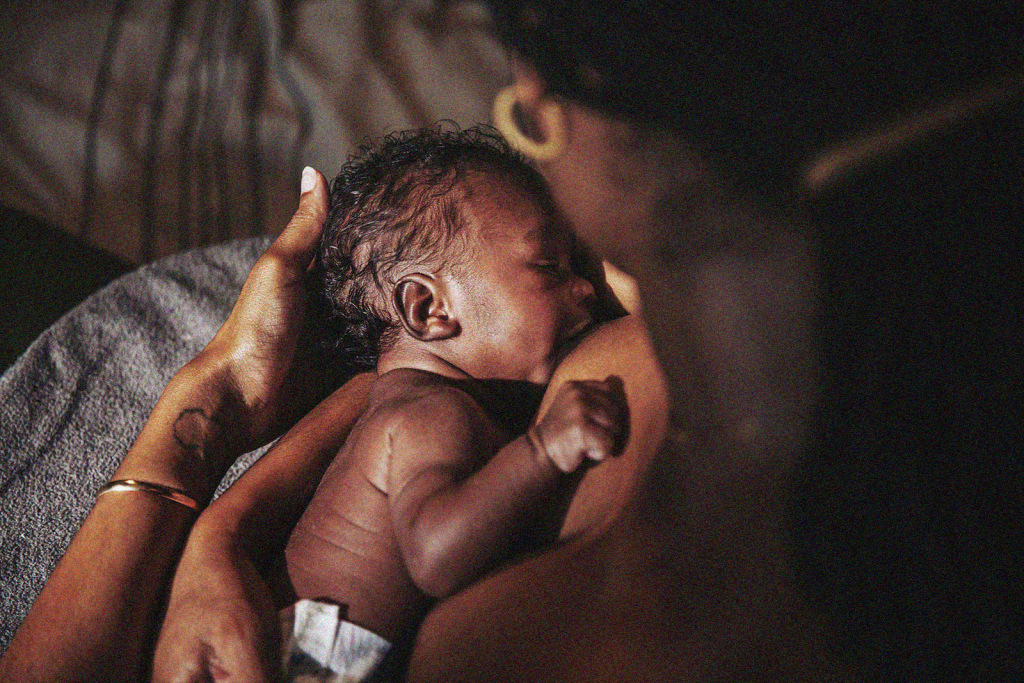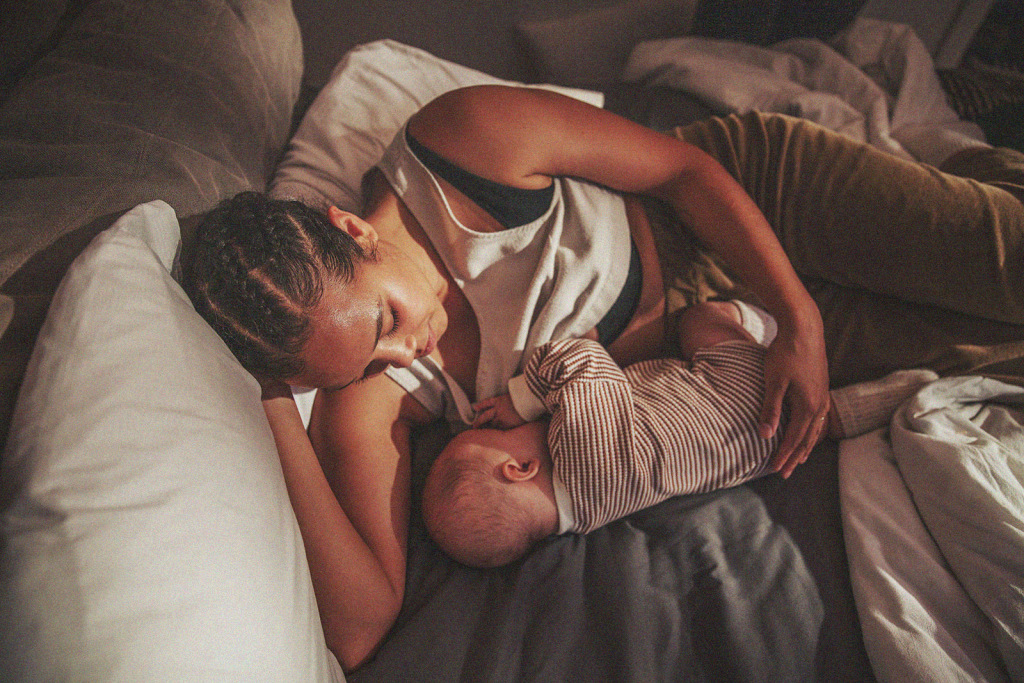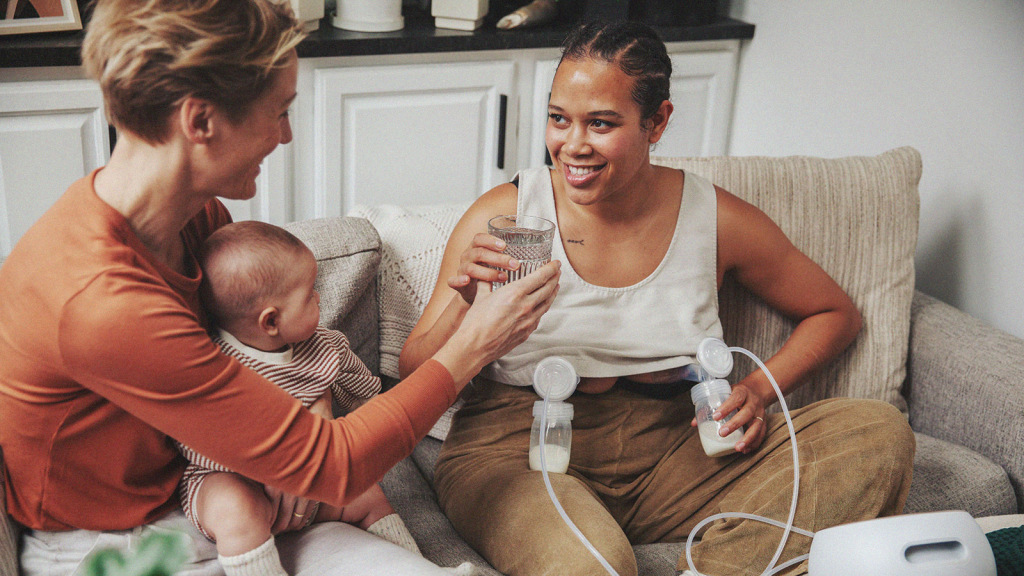The Six Most Common Breastfeeding Positions
Breastfeeding is like any other skill–you (and your baby) have to learn how to do it together. While nursing may come easy for some, it usually takes time to get the hang of it. Every parent and baby is unique, and depending on your body, type of delivery, gestational age at birth, your baby’s latch, or feeding challenges, certain breastfeeding positions may allow for a more comfortable and successful nursing session than others. If one position isn’t working for you, there are alternatives worth trying. We talked to TLN Consultant Relations Manager and IBCLC Chrisie Rosenthal about the most common breastfeeding positions.
Cross-Cradle
The cross-cradle gives you a lot of control when latching your baby, making it ideal in the early days and weeks of nursing. Babies who are born prematurely or who struggle to latch can benefit from the extra level of control this position gives parents while latching, according to Rosenthal.
Position your baby’s body horizontally across your torso so you and your baby are aligned tummy to tummy. Support the breast with the hand on the feeding side (right breast, right hand or left breast, left hand) while the opposite arm supports the baby with a thumb and forefinger placed behind the baby’s head.
Football
The football position also offers great control, making it helpful for babies who have trouble latching or are born prematurely and for parents with large breasts or flat nipples. Parents of twins often use the ‘double football’ to tandem feed their babies. Rosenthal says the football position is also great for parents who had a Cesarean delivery “because it moves the pillow and baby farther away from the incision, making feeding more comfortable.”
Position your baby’s body along the side of your body under your arm–kind of like a football. Support the baby’s head with the hand on the same side as the breast. Your hand on the opposite side can compress the breast if needed.
Cradle
The cradle hold is a popular and comfortable position best suited for babies who are at least few weeks old and can maintain a deep latch.
This position is similar to the cross-cradle, except your baby’s head is resting in the crook of your elbow , supported by the arm on the feeding side. Your baby should be positioned tummy to tummy with you, horizontally across your torso.
Side-Lying
The side-lying position is great once your baby has gained some experience latching, or if you have another adult available to help your baby latch. Many parents say that they find this position to be the most comfortable. It is especially useful for parents who have had Cesarean deliveries or if you have arm, wrist, or back pain.
For this position, both you and your baby will lie on your sides, tummy to tummy, on a flat surface–usually a bed. Tuck your bottom arm under your head and use your top arm to support your baby. Be sure to review safety recommendations when laying in a bed with your baby.
Laid-Back
Laid-back breastfeeding (also known as biological nurturing) is considered one of the most ergonomic breastfeeding positions. It’s a comfortable position for babies to manage the flow of milk and provides a restful position for tired parents. Reclining also helps slow the flow of milk for parents with an overactive letdown.
In this position, you are reclined with your baby positioned across your torso, tummy to tummy. Your arm on the feeding side cradles the baby for support.
In this position, you should be reclined with your baby positioned across your torso, tummy to tummy. Your arm on the feeding side cradles the baby for support.
Upright
If feeding your baby horizontally isn’t working well, try positioning them vertically. This position is good for older babies who have GERD/reflux because gravity helps milk flow downward and gives the milk a chance to settle while your baby feeds.
There are several upright positions you can try. One is the ‘koala hold.’ This is a popular position for older babies who have started sitting up.
Position your baby so that they are sitting on your lap, tummy to tummy, with their feet tucked or wrapped around your waist. Support their head and body with one arm and use the other to hold your breast if needed. For younger babies, you may find it helpful to recline so they can lean into your torso while they feed.
Which Breastfeeding Position is Right for Me?
There is no right (or wrong) answer–finding the best feeding position simply takes practice. Rosenthal encourages parents to try out different feeding positions. “Experiment with positions to find the one that’s the most comfortable for you and your baby. Your favorite feeding position may also change over time as the baby gets older and bigger.”
What if No Breastfeeding Position Feels Right?
If you are struggling to find a comfortable breastfeeding position, connect with a TLN IBCLC for expert help and encouragement. “IBCLCs provide both education and practical tips when it comes to breastfeeding positions. There’s no one position that works for every parent and baby. After evaluating a feed, your lactation consultant will be able to give you options for positions, and suggestions to maximize your comfort while feeding,” says Rosenthal. “Chances are that a small change, adding the right support, or using an alternate position, can make a big difference in how your body feels while breastfeeding.”



